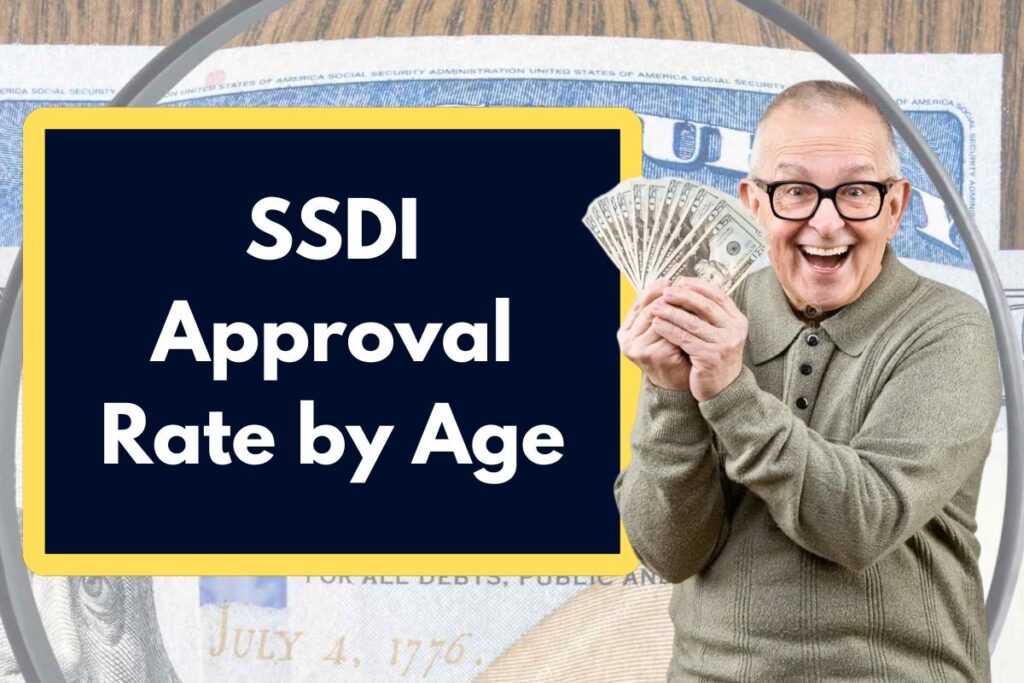A major government of America program, SSDI provides financial assistance to those with disabilities that affect their ability to work. Those who are considering SSDI benefits often have a lot of questions and concerns. The applicant’s age has a significant impact on the approval procedure.
While age is only one of several factors considered in SSDI evaluations, it is one of the primary factors affecting eligibility. Due to physical, cognitive, and skill-related constraints, people are less able to adapt to new forms of work as they age, according to the SSA.
It is commonly assumed that older applicants will have a harder time obtaining other work, which strengthens their arguments but age is only one of several factors. By making a compelling case, younger applicants can still obtain advantages even though their approval percentages are lower. It is crucial to show how a disability significantly affects one’s capacity to carry out any type of work.
SSDI Approval Rate by Age
Navigating the Social Security Disability Insurance (SSDI) application procedure can be daunting, and many applicants are curious about whether age has a big impact on their chances of being approved. An obvious trend emerges from the data: older applicants typically have better success rates.
Applying for SSDI requires fulfilling certain requirements. Applicants must show that their handicap keeps them from doing substantial gainful activity and their illness must also be fatal or last for at least a year.
What are the SSDI Eligibility Criteria?
- Applicants must first provide evidence that they fit into one of the following groups: handicapped, blind, or older than 65. In addition to fulfilling one of these requirements, applicants must prove that they are citizens or nationals of the United States and have limited income and resources.
- The minimum age requirement for disabled applicants under 65 is 18 and for people between the ages of 18 and 65 to be eligible for SSDI, they must present substantial proof of their disability, such as a specific diagnosis, supporting medical records, functional limitations that affect their capacity to work, and an expectation that their disability will last for at least 12 months.
- Applicants over 65 must also go through a distinctive evaluation process. A thorough review of their medical records is required, with a focus on age-related disabilities that might be relevant to their case. This recognizes that a person’s capacity to work or carry out everyday duties may be severely impacted by certain age-related disabilities.

Why Does Age Increase SSDI Approval?
The main reason for this is that the Social Security Administration does this on purpose, though there are probably other factors at work as well. People often file for disability because they are unable to perform their job duties, but the SSA does not want to approve such applications unless the applicant’s age makes such vocational training impractical or even impossible.
The fact that new symptoms and illnesses often coincide with aging is another element, which explains why we continue to witness growth in each of the age groups mentioned rather than a sudden spike at age 55. Additionally, higher acceptance rates are associated with more symptoms or more debilitating symptoms.
Age Groups- Approval Rates for SSDI Benefits
A review of the relationship between age and SSDI approval rates can yield important information for potential applicants who are looking for financial aid because of a disability. Different patterns might be seen in different age groups according to recent data. It has been highlighted that disabled applicants over 50 had twice the chance of having accepted compared to those under 50.
Younger applicants were granted at much lower rates than seniors, according to one study, which showed an ascending slope in approval rates. The following statistics were illustrated by the survey’s results:
- Applicants aged 40-49: 42% approval rate
- Applicants aged 50-54: 49% approval rate
- Applicants aged 55-59: 57% approval rate
- Applicants aged 60-65: 62% approval rate
Is Age a Reason to delay Your Application?
Although older people are more likely to be approved, it is not advisable to postpone your application unless you are still employed or awaiting important medical records. The SSA restricts retroactive payments to 12 months prior to the application date, and delaying could result in lost benefits.
In order to increase their chances of receiving benefits, applicants of any age should sustain therapy, seek professional support, and submit strong medical evidence. Starting the process early and presenting a strong case are essential if you want to get the assistance you are entitled to.
Other Factors Affecting Approval Rates
Although age plays a big role in the SSDI acceptance process, there are a number of other important considerations. Together, these components support the thorough assessment of disability claims. The SSA will take into account the following factors when reviewing your application, regardless of your age:
- Work History: In order to get benefits, an individual must have worked for a predetermined amount of time and made contributions to the SSDI program. In order to ascertain if an applicant has accrued enough work credits to be eligible for benefits, the SSA evaluates their employment history.
- Compliance with Medical Treatments: Following recommended therapies, treatments, and prescription drugs shows that a candidate is dedicated to taking care of their illness. This might support their argument by demonstrating continuous attempts to lessen the impact of the handicap.
- Information Reliability and Consistency: All of the application’s content, including personal narratives and medical records, must be dependable and consistent.
- Average Earnings Over Life: As part of the evaluation procedure, the SSA looks at a claimant’s average earnings over their lifetime. Average indexed monthly earnings (AIME), which is a key factor in figuring out how much in benefits a person might be eligible for, is computed using a particular formula during this phase.
- Other Benefits Received: If an applicant is already receiving retirement or survivor’s benefits, for example, their SSDI approval rates may be impacted. A “benefit offset” procedure is used by the SSA to stop people from getting duplicate benefits that beyond specific limits.
| Official Website | Click Here |
| Homepage | KeralaCoBank.Com |
Samarth Choudhary is a Chief Editor at keralacobank.com. He has overall editorial experience of 10 years in online media. He has completed his graduation from University of California and masters in Finance from University of Dallas in year 2010. His major interest and expertise is in Finance, Taxes, Government Aid and Schemes. His Major focus is to help users to get relevant information which are published on keralacobank.com in easy and precise form.

